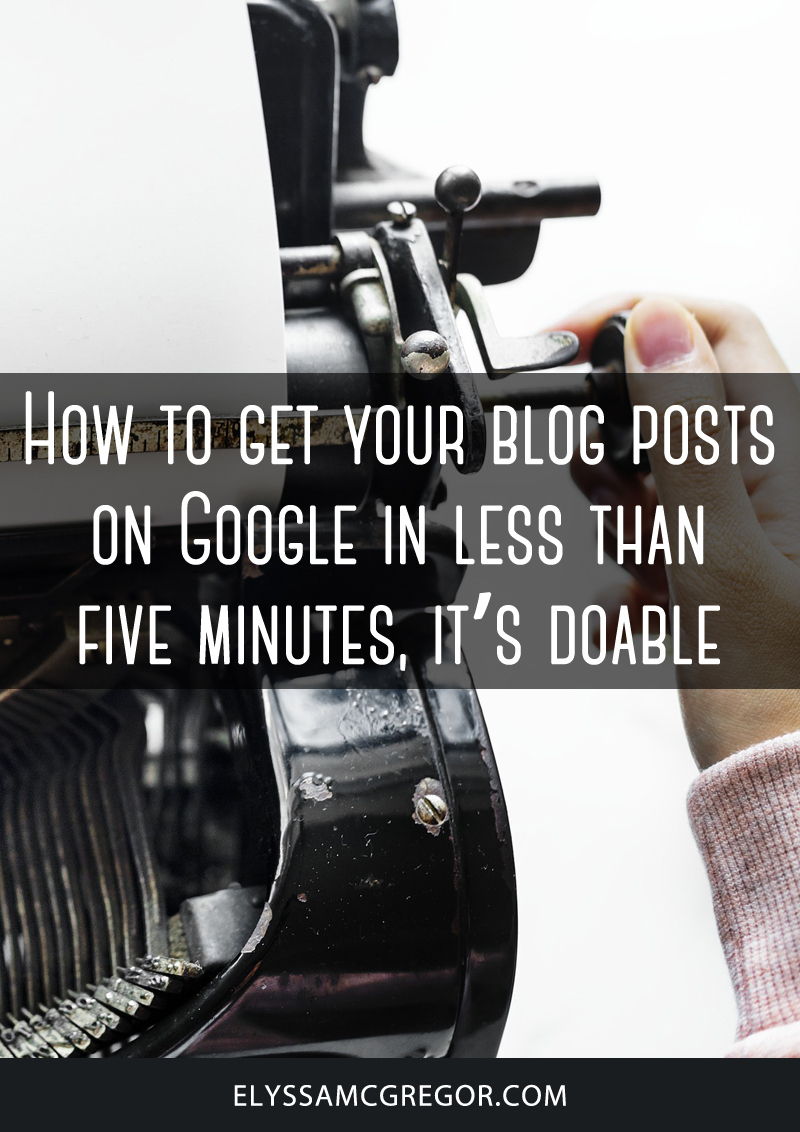
How to get your blog posts on Google in less than five minutes, it’s doable
Have you ever seen those blog posts on Google that say they were published 5 minutes ago? And wonder how the heck do they do that? I know with my personal blog posts I used to wait forever for them to get indexed by the search engines. Guess what? Post publishing isn’t just about clicking the blue publish button. There’s a little more to it than just that. It’s called fetch as Google.
On July 25, 2018 Google announced that they had to drop the public submission feature, which allowed users to submit any web page to Google’s index. They are now advising people to use the Search Console’s Fetch & Submit for individual webpages.
We've had to drop the public submission feature, but we continue to welcome your submissions using the usual tool in Search Console and through sitemaps directly.
— Google Webmasters (@googlewmc) July 25, 2018
Post Publishing and Google Search Console
Yep, it all has to do with fetch as Google using Google Search Console. If you haven’t already claimed your website on Google Search Console, it’s a must do. There’s a section in there called Crawl » Fetch as Google. It actually says it’s a tool to test if Google can crawl your web page. But, it does a little more than just that. 😉 It indexes your blog posts to Google. Otherwise, you’re just playing the waiting game. And waiting for Google to come to your website to index your fresh content, that may or may not be fresh any more, because it could take a long time.
Fetch as Google
It’s pretty straightforward, but I’ll go ahead and walk you through it, assuming you’ve already claimed your website on Google Search Console. Make sure you select your preferred domain you’ll be publishing the blog post under. For instance, if you have claimed the following websites: https://yourdomain.com/, https://www.yourdomain.com/, and https://www.yourdomain.com/. Then select the URL that appears on the search engine, as your preferred URL. So for mine, I would go ahead and select https://www.elyssamcgregor.com/. Then head on over to Crawl » Fetch as Google.
Under Fetch as Google, they have already listed your preferred URL that precedes your subdirectory, if any, and blog post title. All you have to do is finish entering the rest of the URL following the preferred domain already listed for you.
Fetch or Fetch and Render
Now you have two choices here to either fetch your web page or fetch and render your web page. And you can choose to do this for either your desktop version or mobile: smartphone version. Since we are just indexing our web page I usually choose the desktop version along with fetch, but that’s just my preference. You can simply choose desktop version along with fetch and render if you wish and get the same results.
According to Google, Fetch will do just that, it fetches a specified URL in your site and displays the HTTP response. While, Fetch and Render fetches a specified URL in your site, displays the HTTP response and also renders the page according to a specified platform (desktop or smartphone). This operation requests and runs all resources on the page (such as images and scripts). Use this to detect visual differences between how Googlebot sees your page and how a user sees your page. In layman’s terms, you can see how Googlebot renders your web page to help give you a visualization so you can see what Googlebot sees.
Difference between Google Fetch and Sitemap Submission
The Fetch as Google tool lets you see a page as Google sees it. This is particularly useful if you’re troubleshooting a page’s poor performance in search results. For example, if you use rich media files to display content, the page returned by the tool may not contain this content if Google can’t crawl it effectively. You can choose to fetch a page as Google’s regular web crawler sees it or, if you publish mobile content, as our mobile crawlers do
Sitemaps are a way to tell Google about pages on your site we might not otherwise discover. In its simplest terms, an XML Sitemap—usually called Sitemap, with a capital S—is a list of the pages on your website. Creating and submitting a Sitemap helps make sure that Google knows about all the pages on your site, including URLs that may not be discoverable by Google’s normal crawling process.
Conculsion…
There you have it, if you perform a Google search you should see that your page has been indexed with the Google search engine. So, you can see simply clicking the blue publish button isn’t enough for getting your page on Google. Google has provided the tools to get you on their search engine too.
So how are you going to get on Google in less than five minutes?




